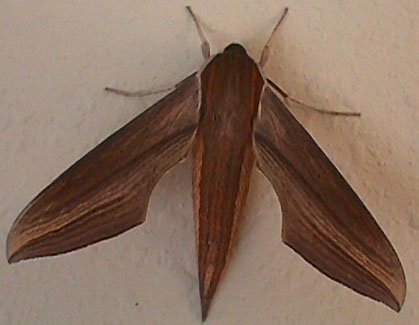
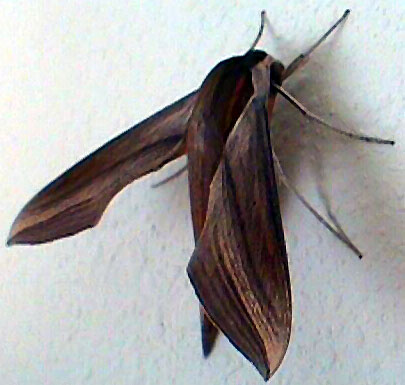


These moths were given the name "sphinx" because of the caterpillar, in resting postion, with the front part of the body raised in the air, was thought to resemble the Great Shpinx of Egypt. Sphinx Moths are also called hawk moths becauswe their wings resemble hawks' wings in shape, and because of their strong flight and hovering ability. They can fly at speeds of up to 25 mph. The Tersa Sphinx Moth is one of the most slender and streamlined of the hawk moths. It's a day-flying moth that can be found nectering at flowers along with butterflies.
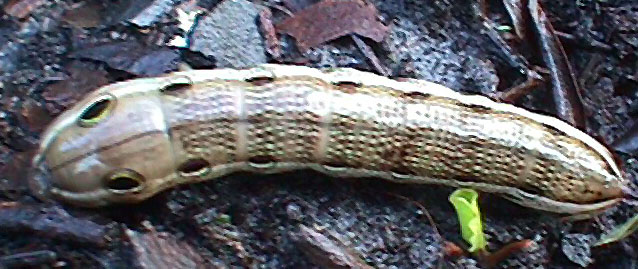 The caterpillars have large eyespots
behind the head. When disturbed, it tucks it's head, causing the eyespots to be more
The caterpillars have large eyespots
behind the head. When disturbed, it tucks it's head, causing the eyespots to be more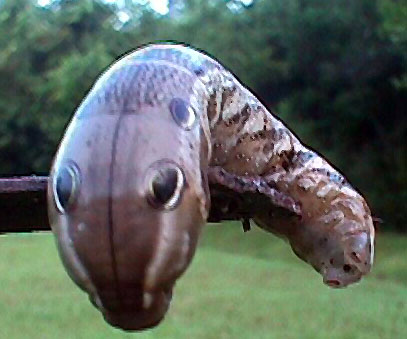 prominent. Sphinx moth
caterpillars almost always have a large horn at the tip of the abdomen, but are otherwise
naked, with no hairs or other physical ornamentation. Most also pupate in the soil,
and the pupae have a jug-like form.
prominent. Sphinx moth
caterpillars almost always have a large horn at the tip of the abdomen, but are otherwise
naked, with no hairs or other physical ornamentation. Most also pupate in the soil,
and the pupae have a jug-like form.
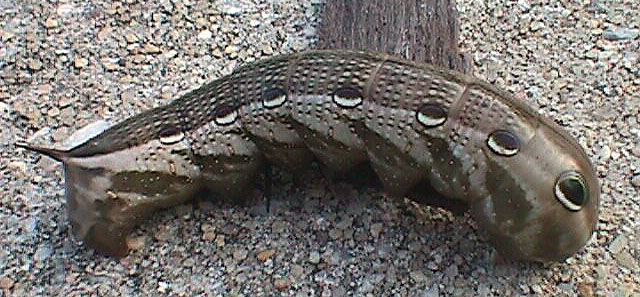
Many people ask "How do I get rid of hornworms in my garden?" I ask "Why do you want to?" Yeah, they might eat your maters or peppers (or your Penta), but they are such cool cats and moths!!!!!